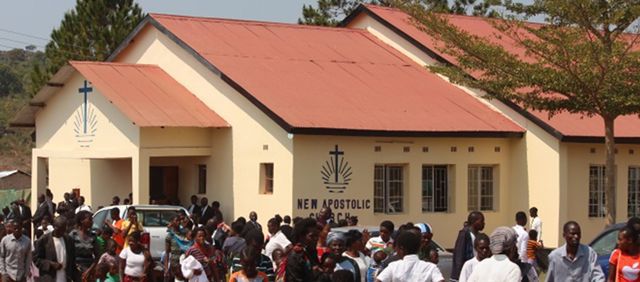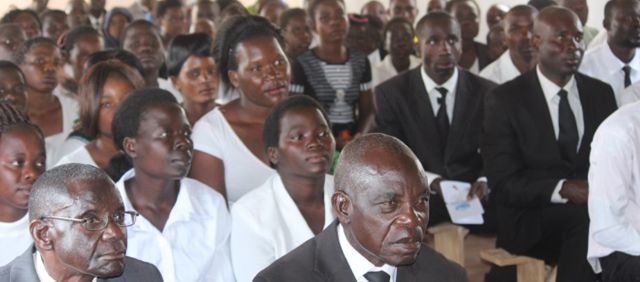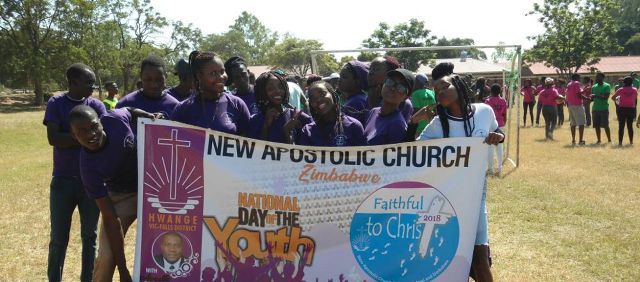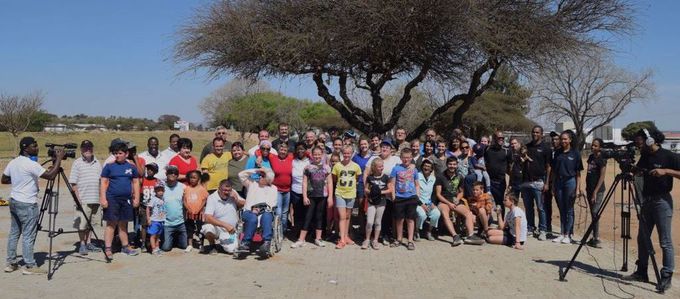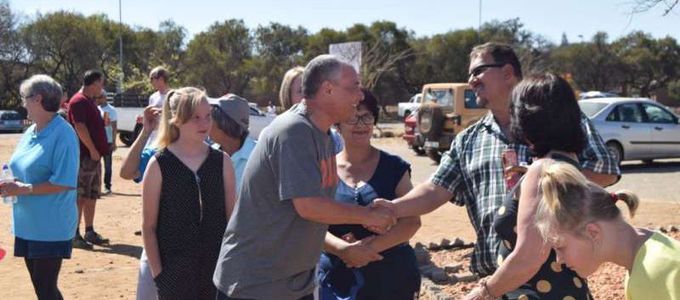
The church pew is half empty, congregations are being amalgamated, and children haven’t been seen in ages—are we to simply sit idly and sadly by and wait for change? How do you bring life into a congregation? And how does a congregation even come into being in the first place?
Talking about faith for years
Sister Mary Elevine Namunyimbili tells her neighbours and work colleagues about God, the sending of the Apostles, and her belief in the imminent return of Jesus Christ. A short time later, the first New Apostolic congregation comes into being in Isoka, in North Eastern Zambia. Believers gather regularly for divine services. In 1975 the congregation celebrates the Holy Sealing of 21 new members with Apostle Duncan Mfune. In 1980, another 38 members are added. The members of the congregation continue to talk about their faith and invite others to divine services—and the congregation grows!
Building and enlarging churches
Then the first New Apostolic Church building is built out of mud bricks and a thatched roof. A few short years later, in 1994, a central church with seating for 500 is erected. In recent days the members in Isoka came together for several divine services with District Apostle Helper Robert Nsamba in various locations.
Cultivating and enjoying fellowship
Christians are not lone fighters. That is nothing new. Nevertheless, it can quickly happen that someone withdraws from the fellowship and loses touch. To practise fellowship and help cultivate it is a recipe that has proven itself many times over. Whether it is young people gathering for smaller or larger youth weekends, or Christians gathering with other Christians for a church celebration, congregations around the world demonstrate that fellowship can be cultivated—indeed that fellowship must be cultivated—and that it can also be enjoyed. And it is also clear that this requires a certain amount of effort at times, because the way there is not easy.
Not a country club membership
And once the congregation has been established, and fellowship is being enjoyed, what are the tasks of the individual member of the congregation? This month, the website of the NAC USA is publishing video clips and short texts that provide members with inspiration on how to be active in the congregation. One thing is clearly addressed: this is not a membership to a country club, where one is served after paying one’s membership fees. Fellowship means participation.
Doing good works
Christian living also requires active and attentive observation—even to notice the life situation of one’s neighbour. This is no task for a lone fighter either. Doing good works together in the congregation and helping others together is also a task for the congregation as a whole. This strengthens fellowship and scales down the importance of each one’s own interests.
Congregational life is subject to changes. However, believers can influence the development of their congregation to a large degree. Here it is clear that Europe is not Africa and that America is not Asia. But the joy in the Lord, the profession of faith, and the hope in the return of Christ are the same in all our congregations.
And in very practical terms, with some tried and true methods, life can still come into the congregation—all around the world, even in our days—namely when we talk about our faith (not only with one another, but also with those who know nothing about God), build and enlarge churches, cultivate and enjoy fellowship, serve our neighbours, scale back our own sense of entitlement and do good works.






